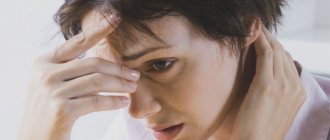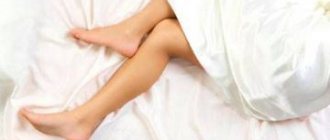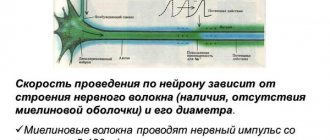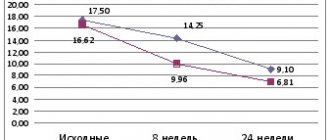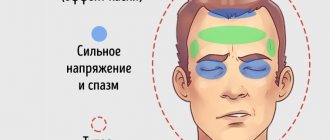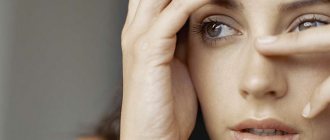Many people have to wonder why the eye twitches. Nervous tics are widespread phenomena. Eyelid twitching is a repeated involuntary contraction of the orbicularis oculi muscles. As a rule, the tic spreads only to one eyelid, but sometimes twitching is observed both below and above.
Causes of eye muscle contraction
There are many conditions that affect the appearance of eye tics. All of them are varied in their content. The main ones are:
- Lack of vitamins - this reason has its roots in the area of poor nutrition. If one restricts one’s diet, a person loses many useful substances that he could absorb with a lot of food taken internally. Most often this is a lack of calcium, magnesium and glycine. Due to their absence in the body, seizures, tics, etc. may occur.
- Recent illnesses (ARVI, conjunctivitis, etc.) – with a weakened immune system, unobtrusive movements may occur. This happens due to the fact that the human nervous system has not yet strengthened.
- Eye fatigue is the most common cause, which is expressed in constant work at the computer, lack of sleep, etc. It is typical for office workers, as well as people who often play on computers.
- Heredity – genetic transmission (eye tics may appear at the same age).
- Nervous experiences - work or home quarrels, stress negatively affect the human nervous system.
- Diseases that cause tics: Tourette's syndrome, Bell's palsy, etc.
- Irritation of the mucous membrane of the eyes - allergies, infections, etc. In this case, the eye begins to blink voluntarily in order to get rid of the sensation that causes discomfort.
- Injuries – concussion, stroke, etc.
Why do eyelids twitch?
The eyelid may twitch due to overwork or stress.
In most cases, the condition when the eye twitches is explained by a nervous tic. This is a kind of failure in the autonomic nervous system. It is impossible to control the process when the eyelid twitches: the peripheral small nerves do not obey volitional efforts. As a rule, the sensation is just unpleasant and does not pose a health hazard. However, if situations where the eye twitches are repeated and become an obstacle to normal life, it is important to find the cause. The most common explanations are:
Eye muscle fatigue
Such ailments affect office workers and other people who, of necessity, spend many hours under active strain on their visual organs. The “eyelid twitching” signal should be perceived in the same way as trembling in the arms or legs when training on exercise machines. That is, you need to pause and rest.
Stress, overexertion
Problems in the family, at work, and personal crises not only spoil your mood. Anxiety forces the adrenal glands to produce adrenaline, which is not “used for its intended purpose” - after all, the person does not run away, but continues to experience negative emotions. The excitatory hormone finds its way out, including the fact that the eye twitches.
Neuroses
These are conditions that require outpatient and sometimes inpatient treatment. Of course, you should not suspect the manifestation of neurotic manifestations if your eyelid is simply twitching, but for a psychotherapist, an obsessive eye tic will be one of the confirmations of the diagnosis.
Conjunctivitis
The eyelid twitches not only due to psychological or neurotic problems. There are also purely physiological reasons, including conjunctivitis - inflammation of the eye membrane. As a rule, it is accompanied by redness of the cornea, pain, dry eyes and a feeling of “sand in the eyes.”
Cerebrovascular disorders
In general, if the eye twitches, this is a more or less harmless symptom. The only reason that can cause this sensation and at the same time be life-threatening: circulatory disorders in the brain, even a stroke. In this case, trembling of the lips or hands, confusion, and speech disturbances occur.
Toxic damage to the body
In the simplest version - banal alcohol poisoning, that is, a hangover. Nervous tics often “get” people the morning after excessive drinking. But the effects of other toxic substances can manifest themselves in a similar way.
A single eye tic should not bother a person or attract attention. Failures in the functioning of the peripheral nervous system occur in almost everyone. In the vast majority of cases, it is enough to rest a little, sit with your eyes closed, or take a break from the monitor to contemplate the landscape outside the window. Only recurrent, bothersome episodes of tics require any intervention.
Main symptoms and diagnosis
First you need to see a therapist. If there is a suspicion of any initial stage of the disease, then an examination by a neurologist or other doctor of a narrow specialty will be required.
Symptoms of the disease:
- Frequent blinking, which causes discomfort;
- the eyelid twitches (contraction of other facial muscles is possible);
- the corner of the eye or the eyebrow of the corresponding eye is raised;
- pain appears in the eye (redness may also appear).
It is necessary to establish the main cause of the appearance of this tic, as well as find out a possible genetic predisposition to diseases where eye twitching is a symptom of its onset. If it is detected, a more detailed diagnosis is carried out.
First aid for nervous tics
Since the most common cause of primary nervous tics of the eye is overwork, the first aid will naturally be relaxation. Experts advise to close your eyes during eyelid contractions and try to relax the muscles of your face and neck.
To quickly relieve muscle tone, you can first open your eyes wide, then blink quickly and sharply several times. Then close your eyelids and remain calm for a minute. To prevent the tic from recurring and becoming stronger, it is important to stop for the next 30 minutes. strain your eyes by reading, take a break from watching TV, don’t look at your phone or computer screen.
The first aid to a child when a tic occurs is to distract him from this phenomenon, completely switch his attention to something interesting. This not only ensures that the child does not focus on the unpleasant sensation, but also that unnecessary nerve impulses calm down in his brain more quickly.
An adult with a more protracted eye tic can apply strong pressure for 7-8 seconds. finger in the middle of the eyebrow, where the nerve passes. In addition, one way is to press with 2 fingers for 5 seconds. at the corners of the eye, the eyelid of which is contracting.
How can twitching be treated?
There are many ways to get rid of eye tics. These are both folk remedies and medications, the use of which depends only on the choice of the person suffering from this disease.
Medicines
Many people still trust drugs from the pharmacy rather than folk remedies. Of course, their effect is permanent. Such means are:
- Oftolik is a product in the form of drops that has a calming effect.
- Coaxil, Adaptol are sedatives that help get rid of seizures and tics.
- Novo-passit is a herbal preparation in tablet form that reduces irritability.
Folk remedies
Any person tries a folk recipe at least once in his life, and many are treated only with them. There are various ways to get rid of twitching, for example:
- Figs will help get rid of teak: you can use it in the form of homemade jam or make decoctions. Has a calming effect.
- A decoction of rosehip and hawthorn. It is necessary to brew the ingredients in equal proportions and let it boil for 10-15 minutes. It is possible to add other herbs to taste. This will not only make the decoction worse, but will acquire other positive properties.
- Copper wire - place a small ring on the solar plexus, this will help get rid of tic for a while.
- Stuffing a pillow with medicinal herbs - this folk method will help get rid of tension, calm a person, and help get rid of cramps and nervous tics.
- The yogi method helps: you just need to connect the pads of the thumb and index finger, which will allow you to get rid of the tic for a while.
Medicinal herbs
In the old days, herbs were often used for treatment. The eyes were no exception, so many diseases were treated with the help of medicinal plants. Their use was varied, for example:
- Tincture of maralia root: brew the herb as a tea leaves, use instead of tea.
- Tincture of chrysanthemum, chamomile and motherwort - use instead of tea drinks.
- Plantain compresses: chop the leaves and pour boiling water. Let it cool, apply gently onto the fabric, and only then onto closed eyelids.
- Centaury infusion: pour 20 grams of herb into 600 ml. water, leave overnight, take during the day.
- Decoction of motherwort and mint: mix the listed ingredients, add hop cones to them and then pour boiling water. Heat the mixture in a water bath, then remove and strain, leaving only the liquid. Take several times a day.
Proper nutrition will help you get rid of tic. You should not limit your daily menu to monotonous food. You should also eat legumes, nuts, rye bread and other foods that contain magnesium. This element will ensure the proper functioning of the nervous system, and therefore eliminate nervous tics.
If the eye does not stop twitching, then you should think about resting it. You should not sit in front of the monitor for a long time, this will strain your eyes very much.
Causes of primary and secondary nervous tics
Twitching of the lower or upper eyelid is a local phenomenon, it is not controlled by the human brain, and is almost not subject to will. Its other names are hyperkinesis or blepharospasm. The tick never haunts a person in their sleep. It occurs more often in children than in adults, and in boys more often than in girls.
Primary tic is often observed in children, less often in adults. In most cases, primary tics end by the age of 18-20. They are associated with hyperactivity of one of the areas of the brain responsible for many movements that are performed automatically, that is, without the participation of the cortex.
The causes of primary tics are as follows:
Nervous tic of the eye (causes and treatment of the disease - later in the article) of the secondary type is a more serious neurological phenomenon, the basis for the development of which is brain damage.
It may indicate the following diseases and conditions:
- head injury;
- poisoning, intoxication (in particular, carbon monoxide);
- problems with the cerebral circulatory system;
- various types of encephalitis;
- middle ear diseases, stroke, epilepsy, schizophrenia and others;
- infections such as cytomegalovirus or herpes;
- use of drugs, certain medications and excess caffeine;
- brain tumors;
- facial neuralgia, or inflammation of the trigeminal nerve.
A secondary type of tic is just a manifestation of another disease that needs to be treated first.
Preventive measures
Eye tics appear mainly due to stressful situations. Therefore, it is recommended to take hawthorn, lemon balm or valerian to calm the nerves. The remedies will relieve unnecessary irritability, which will have a beneficial effect on a person’s well-being.
You should normalize your schedule: go to bed on time, get enough sleep. It is necessary to try to give your eyes a rest and reduce the effect of ultraviolet radiation on vision.
Diagnosis of the nervous system
In some cases, to correctly prescribe a treatment regimen, it is necessary to conduct an examination of the patient’s nervous system. Doctors use various techniques to differentiate blepharospasm and other attacks of hyperkinesis, for example, in epilepsy.
A nervous tic of the eye develops for many reasons.
To clarify the etiology, as well as correct the treatment plan, in some cases laboratory tests are performed:
- The ionogram will show the content of calcium and magnesium ions in the patient’s blood, the lack of which is responsible for convulsions.
- To diagnose the condition of the thyroid gland, which may influence the occurrence of tics, it makes sense to take a blood test for thyroid-stimulating hormone.
- Experts can detect traces of psychotropic substances and medications in urine.
- The level of copper in the blood is determined to exclude hepatocerebral dystrophy, a hereditary liver disease affecting the nervous system as a whole.
- A general blood test will show the presence of infections in the body.
- Stool analysis is carried out for worm eggs (when diagnosing tics in children).
With the help of instrumental examinations, doctors identify what caused the eye tic, this is especially true when this phenomenon occurs in an adult.
Peculiarities:
- To study the activity of different areas of the brain and establish convulsive readiness, patients are prescribed an electroencephalogram (EEG).
- To exclude brain pathologies (tumors, hemorrhages, etc.), magnetic resonance imaging (MRI) is used.
- The skull is examined using a CT scan to detect bone tumors and injuries (CT).
- Myography (EMG) records the electrical activity of various muscles at rest and under tension. It is carried out to diagnose signal transmission from nerves to muscles.
What does official medicine offer?
Why the left eye and the upper eyelid are twitching can be determined by a neurologist. If the need arises, it is recommended to undergo one or more diagnostics (MRI of the head, EEG). If a person’s nerves are fine and there are no problems with the brain, he should visit an ophthalmologist. Treatment depends directly on why the right eye and upper eyelid twitch.
If the cause of eye twitching is psychological, then sedatives, psychological trainings and techniques are prescribed that will help quickly eliminate the problem.
Treatment of brain pathologies accompanied by tics is carried out on an individual basis. In some cases, doctors prescribe surgical treatment. The following techniques can be used to eliminate tics.
- Psychokinesiology A new universal technique that allows you to quickly and effectively adjust the human body to protect itself from stressful situations and nervous overstrain.
- Holotropic breathing One of the most effective breathing techniques in modern psychology and psychotherapy. After a course of therapy, many patients manage to get rid of not only this problem, but also other psychological problems.
- Diet Patients should eat a balanced diet enriched with foods rich in magnesium and calcium. You should include nuts, lettuce, spinach, currants, parsley, nettles, cherries, lemon balm, tahini halva, milk, watermelons, bananas, legumes, cheeses, cottage cheese, fish, oatmeal and buckwheat in your diet.
- Reducing the load If the muscle under the eye twitches, it is recommended to reduce the time spent watching TV and spending time at the computer, and regularly do relaxing exercises for the eyes. If a person’s professional activity is connected with a computer, it is advisable to drop Vizin (price - 510 rubles), Vial (242 rubles), Systane (478 rubles) into the eyes. Or use special glasses. A common cause of twitching is dry mucous membranes and eye fatigue.
Article for you:
Stomatitis in adults: causes and treatment at home
What causes involuntary muscle contraction?
I believe there is no point in explaining what a nervous tic is. Everyone is familiar with this not very pleasant short-term contraction of the muscles in the eye area. But why it occurs is worth understanding.
Scientifically, eyelid twitching is called blepharospasm. It is difficult to call a nervous tic an eye disease; rather, it is a consequence of abnormalities in the functioning of the body.
Our muscles react by contracting to nerve impulses sent by the corresponding parts of the brain. If malfunctions occur in the work of these centers, then these uncontrollable eye twitches begin.
And the eye muscles are the weakest of the facial muscles; moreover, the largest number of nerve endings are concentrated in the eye area. This is what explains the appearance of a nervous tic most often in the eyelid area.
How to stop eye twitching
Problem solving method!
There are several methods to quickly eliminate a twitching eye:
- Elimination of spasm. To do this, you need to squint hard, then open your eyes as wide as possible. By continuously repeating this movement, the tear film will be distributed evenly. A moistened eye, relaxed eyelids and muscles will be freed from spasm, thereby stopping bothering the person.
- Relaxing massage. Using your middle fingers, lightly massage your eyelids in a circular motion. Wash your hands first to prevent infection from getting into your eyes. Thanks to the massage, blood circulation will improve, muscles will strengthen and strengthen.
- Blinking. You need to blink quickly for 30 seconds. To do this, just imagine that the eyelids are the wings of a butterfly. This procedure will relax the eye muscles, moisturize and cleanse the eyeballs, which will stop twitching.
Whatever the reasons for which the eye twitches, all methods and methods of treatment should be discussed with a specialist. We must not forget that such a symptom can be a sign of serious illness!
Treatment of nervous tics of the eye: effective techniques
After completing the examination, the attending physician, if necessary, prescribes treatment for tic. But only if no other reasons, other than psychosomatic ones, are found for its occurrence. With a secondary tic, it disappears as a symptom after the underlying disease is relieved. Secondary tic cannot be treated separately.
Therapy can be medicinal or without prescribing drugs (psychotherapeutic techniques, establishing a regimen).
There are a number of alternative medicine offerings:
- massage;
The causes of the pathology are different, as is the treatment of nervous tics of the eye. Massage, acupuncture and osteopathy will help.
- acupuncture;
- Botox;
- osteopathy and others.

